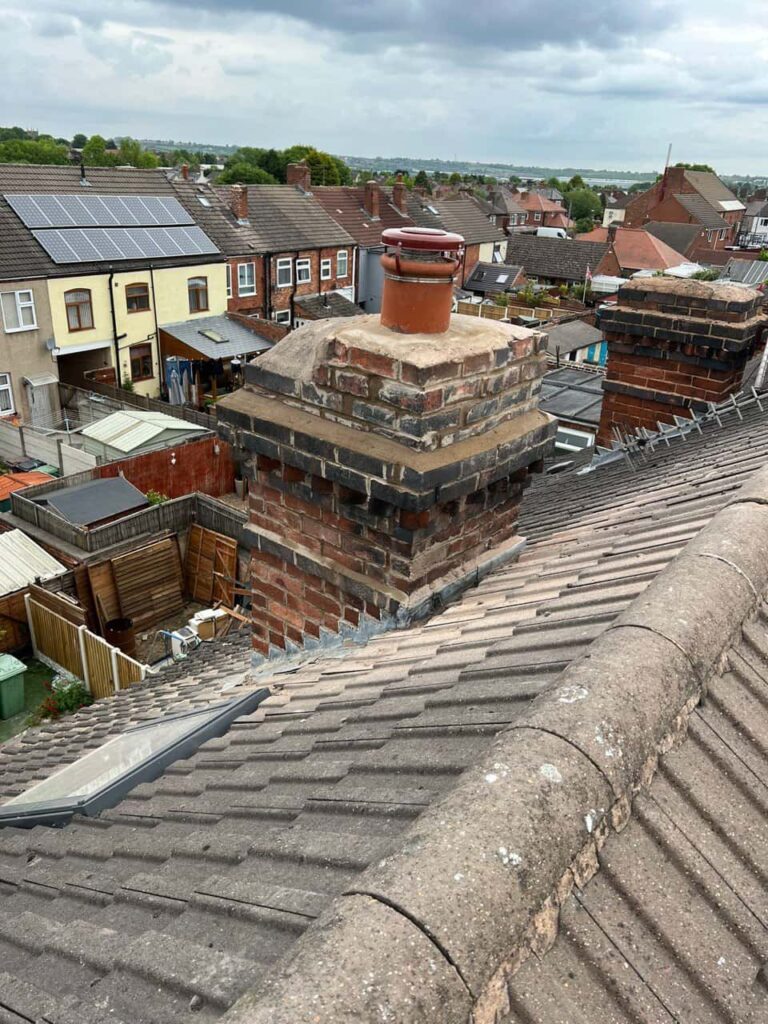Having a roof replacement or re-roofing project completed on your property is a major decision, but it’s also a significant investment that can add value and ensure the long-term protection of your home. If you’re considering a re-roof, you may be wondering whether it’s safe to continue living in the property during the work. The good news is that, in most cases, it is safe to stay in your home while your roof is being replaced or repaired, but there are important factors to consider to ensure your safety and comfort.
At Hedge End Roofing Repairs, we are experienced in handling roofing projects in Hedge End, Hampshire, and can guide you through what to expect when having your roof replaced. In this blog post, we’ll address the key considerations for living in the property during a re-roof, including potential disruptions, safety concerns, and how to make the process more manageable.
What Happens During a Re-Roof?
Before we explore whether it’s safe to live in your home during the re-roofing process, it’s important to understand what is involved in the job. A re-roof involves removing the existing roofing material and replacing it with new tiles, slates, or shingles. Depending on the complexity of the project, this could take anywhere from a few days to several weeks to complete.
Steps Involved in a Re-Roof:
- Removal of old roofing material: The old tiles or slates are carefully removed, which can create noise, dust, and debris.
- Inspection of the roof structure: The underlying roof structure, including the decking, beams, and insulation, is inspected for any damage or wear.
- Installation of new roofing materials: New roofing materials are installed, ensuring a watertight and secure roof.
- Cleaning up: Any leftover debris or waste materials are cleaned up to leave your property tidy.
While a re-roof is a major project, the work typically focuses on the external parts of your home, meaning you don’t necessarily have to vacate the property during the process.
Is It Safe to Stay in the House?
In most cases, it is perfectly safe to remain in your home during a re-roof. However, there are certain factors you need to take into account to ensure your safety and minimise any potential disruptions.
1. Noise and Dust
One of the most noticeable aspects of a re-roof is the noise. The removal of old roofing materials and the installation of new ones can create significant noise, particularly if your roof is being stripped down completely. While this won’t pose a direct safety risk, it can be uncomfortable, especially for young children, pets, or those who work from home.
- Tips for managing noise: Consider staying in a different part of the house, using ear protection, or scheduling the noisiest work for when you’re away from home.
- Dust and debris: There will also be some dust and debris falling from the roof during the work. While roofers usually take measures to contain the mess, it’s wise to cover furniture or move valuables out of the way to avoid any damage.
2. Access to the Roof
During the re-roofing process, contractors will need access to your roof, which might involve scaffolding or ladders around the property. This can create some safety risks, particularly if you have children or pets who could be in the area.
- Safety precautions: Your roofing team will set up appropriate barriers and signs to prevent accidents. However, it’s still a good idea to avoid areas where workers are operating, particularly if you have young children or pets.
3. Structural Safety Concerns
In some cases, the re-roofing work might uncover structural issues, such as damaged rafters or underlying roof decking. If this happens, it’s essential that the issues are addressed before work continues.
- Timely communication: If any structural issues are discovered, your roofing contractor will inform you immediately and discuss how they plan to resolve the situation. If major repairs are required, you might need to temporarily vacate the area where the work is being done.
4. Weather Protection
If your roof is being stripped down completely, your home may be temporarily exposed to the elements. Although professional roofers will work quickly to ensure the roof is covered with a temporary tarpaulin or weatherproof material, it’s important to be aware that your home could be at risk of water damage during the interim.
- Take precautions: You may want to move sensitive items away from windows and walls that are exposed to the elements. Additionally, keeping an eye on the weather forecast and ensuring the roofer has protective coverings in place can help prevent water from leaking into your home.
How to Prepare for a Re-Roof
While staying in the property during a re-roof is usually safe, it’s still a good idea to prepare your home to ensure the process goes as smoothly as possible. Here are some tips for getting ready for your roofing project:
1. Clear the Work Area
Make sure the area around the house, including the driveway and garden, is clear of any obstacles. This will give the contractors enough space to set up scaffolding and move materials safely. It also reduces the risk of damage to your property.
- Move vehicles: If possible, park your car away from the work area to avoid falling debris.
- Secure outdoor items: Move any outdoor furniture, plants, or decorations away from the work site to prevent damage.
2. Protect Your Interiors
To protect your interiors from dust, move furniture away from external walls and cover anything that could be affected by dust or debris. Consider using protective sheets or tarps for added protection.
- Close windows: Keep windows closed during the installation to prevent dust from entering the house.
- Use plastic sheeting: For additional protection, cover the floors in rooms directly under the work area with plastic sheeting.
3. Communicate with Your Roofer
Good communication with your roofing contractor is essential for a smooth project. Discuss the timeline, any concerns you have about noise or safety, and the work schedule.
- Set expectations: If you are concerned about noise, ask the roofer to schedule noisy work during the hours you are out of the house.
- Check safety protocols: Ensure that the roofer will take the necessary safety measures, such as securing scaffolding and providing barriers around the work area.
Conclusion
In most cases, it is safe to remain in your property during a re-roof, although it’s important to be prepared for noise, dust, and some disruption. By taking appropriate precautions and communicating effectively with your roofing team, you can ensure that the re-roofing process is as smooth and safe as possible.
If you are planning a re-roof in Hedge End, Hampshire, and have any concerns or questions about staying in your property during the work, don’t hesitate to contact us at Hedge End Roofing Repairs. Our experienced team will guide you through every step of the process and ensure your home remains safe and protected during the project.
Call us on: 01489 359 891
Click here to find out more about Hedge End Roofing Repairs
Click here to complete our contact form and see how we can help with your roofing needs.

